If 22 railroads bought FT locomotives, which ones didn’t? The main ones were coal haulers, such as C&O and N&W, and other railroads with innovative steam programs, such as Pennsylvania and Union Pacific. These railroads thought they could make steam as efficient as Diesels and so didn’t jump on the General Motors bandwagon until after World War II.
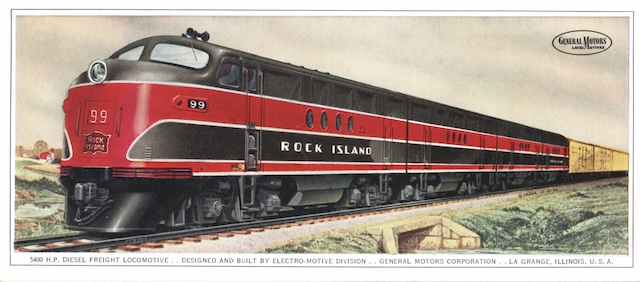
This card is signed B. Dedek and appears to be dated October 38, 1943, six months before the locomotive was delivered.
Rock Island ordered 20 A units and 16 B units. Although they were numbered in the 70s, 80s, and 90s, they seemed to have been delivered in reverse order, with the high 90s showing up in April 1944, the 80s and low 90s later in 1944, and the 70s in 1945. Thus, number 99 shown in this painting may have been the first one delivered.
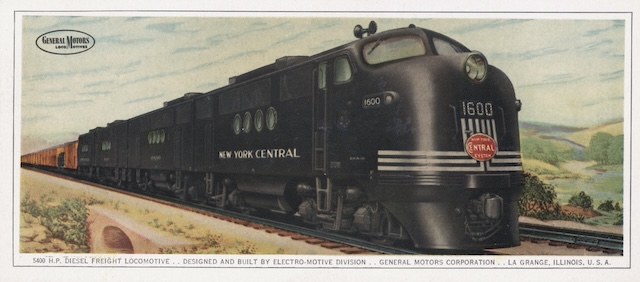
I don’t see a signature but I suspect this painting is by Bockewitz.
New York Central bought just two four-unit FTs. The first, 1600, was delivered in June 1944.
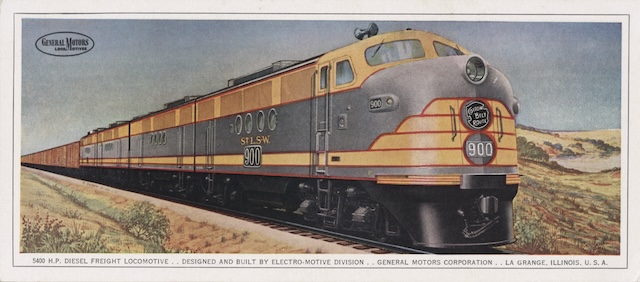
This card is signed B Dedek and dated February 24 1944.
The Cotton Belt ordered five four-unit FTs. The first one, number 900, was delivered in June 1944.
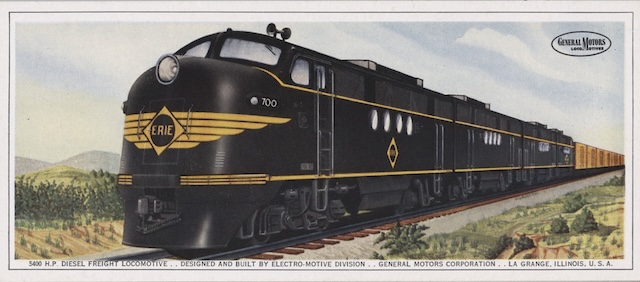
This card is signed H.U. Bockewitz.
For some reason, GM printed two cards showing number 700, the first of six four-unit locomotives purchased by Erie. This was delivered in October 1944.
I’d like to think one card was by Bockewitz and one was by Dedek but they both really look more like Bockewitz’s style. Perhaps the real reason for a second card is that it shows a double track. Erie may have wanted to show a second track to indicate that it could be competitive against New York Central’s and Pennsylvania’s famous four-track main lines.
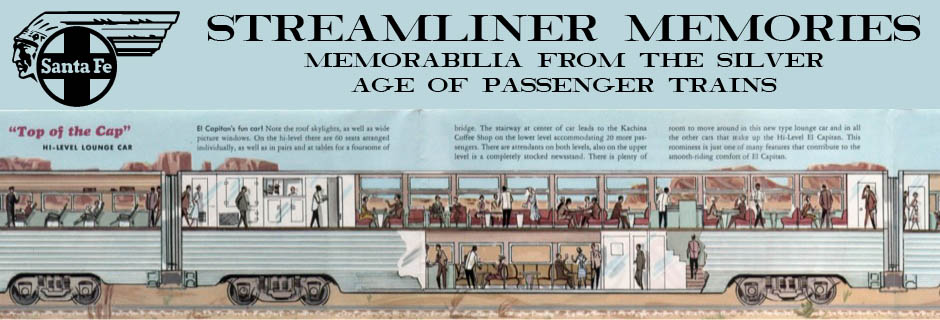
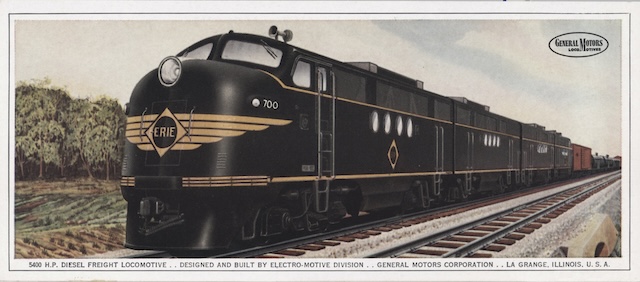
There may have been other factors at work with the roads that did not immediately start the transition to diesel power:
1. It was not yet well understood that diesel engines produced less stress on the rails and road bed compared to steam. So an unanticipated benefit of dieselization was lower track maintenance costs.
2. I don’t know what the tax code looked like back in those days, but I do remember reading that Don Russell, after becoming president of the SP made a remark to the effect that using fully depreciated steam locomotives made some sense, in some situations. This may explain why SP’s conversion to diesel power was not complete until sometime around 1957.